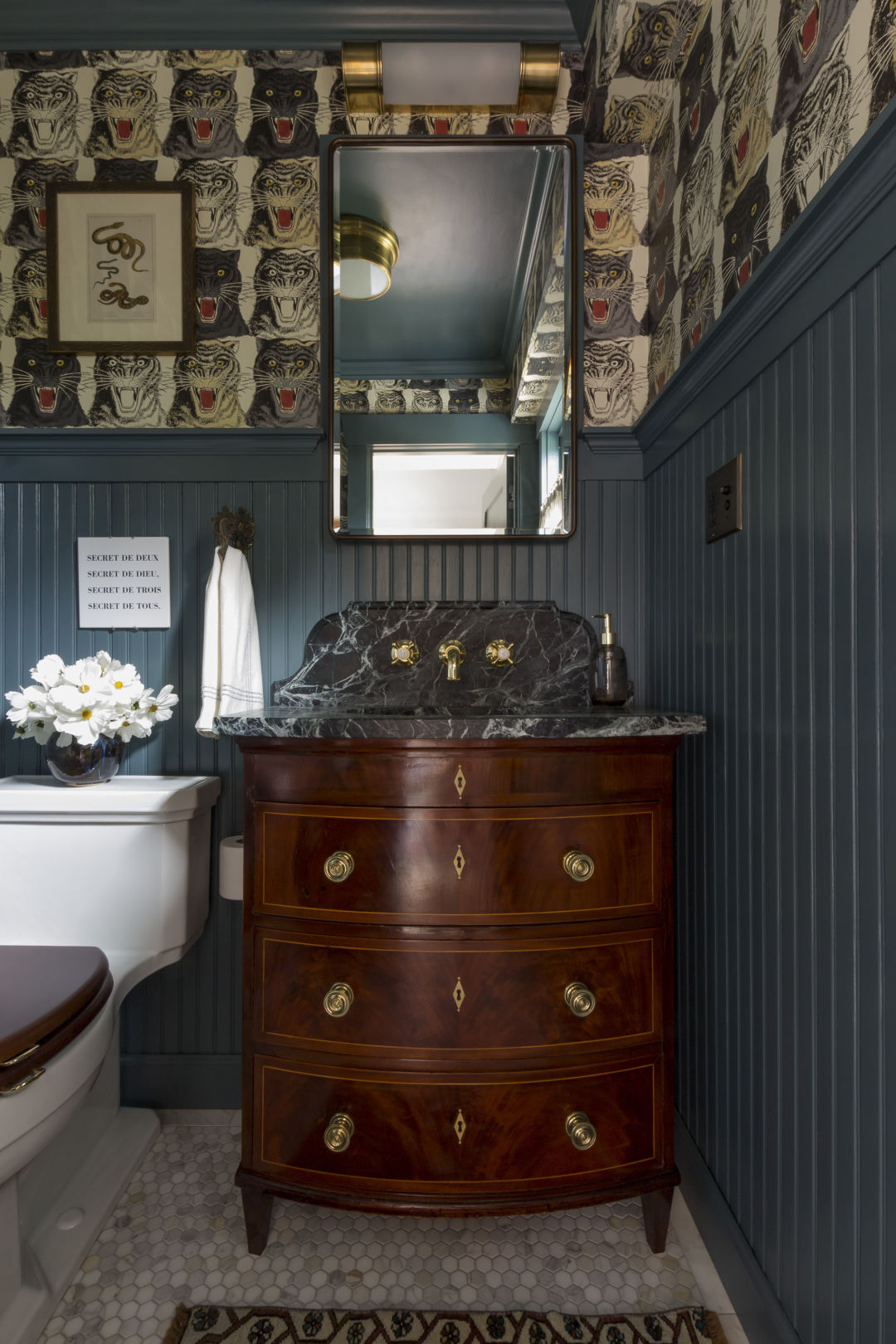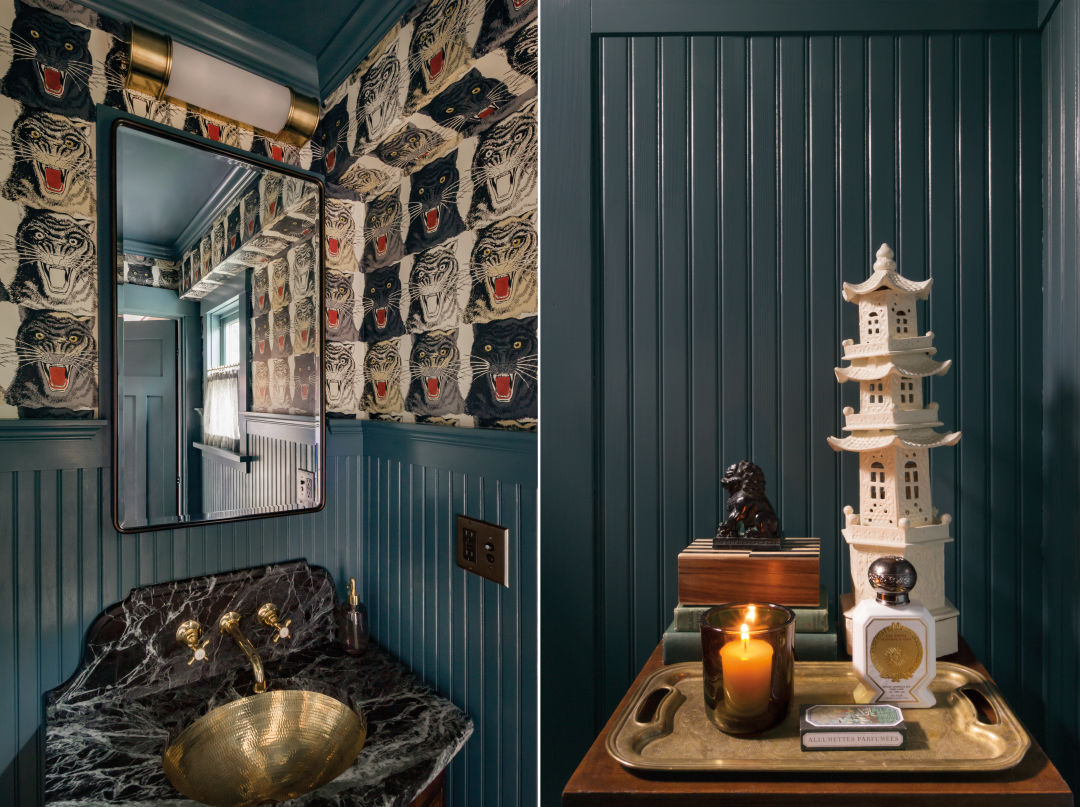A Fierce Makeover for a Beacon Hill Powder Room

Low-Key Lavish To upgrade this look for a slightly lower price, Caron found a mahogany toilet seat on Amazon; she also installed chic sanitary handles by Perrin and Rowe.
In late 2014, Lauren Caron left her job creating whimsical, lavish installations at Bergdorf Goodman to start her own retail and residential design collective. Less than a year later, her husband Jack took a job at Microsoft; in 2016 Caron found herself unpacking in a cottage on Capitol Hill. She still had a few clients in New York and planned to be a bicoastal firm on paper, but really, she was starting over.

To Each Its Own When a room is separated visually from other spaces in the home, don’t be afraid to give it a more individual look.
Deliberate Design Repeat a finish at least twice so it feels purposeful (like incorporating oil-rubbed bronze into the mirror frame and the switch plate covers).
A few years later, Caron—today the founder and principal of design firm Studio Laloc—still didn’t feel totally settled in Seattle. She hoped finding a home to make her own would help her acclimate. The couple had just lost a bid on what they thought was their dream house when Caron found the 1916 Beacon Hill Craftsman. It felt like the three-bedroom just off Jefferson Park Golf Course had been waiting for them—original moldings and woodwork and high ceilings lent a familiar East Coast feel. Caron looked past the slightly overgrown garden, with its strawberries and fruit trees, and saw endless potential.
In refreshing the space, “I could indulge everything I’ve shown clients and they haven’t wanted to do,” Caron says. But her admittedly expensive taste and an uncompromising line on quality required some creativity to stay within budget. Luckily, Jack happens to be a skilled carpenter, and with her background in illustration, visual merchandising, and exhibition design she could cover other aspects, like design, window treatments, painting, and finishing.
Jack’s to-do list in the summer of 2019 included ripping up the half-bath’s vinyl floors and removing stubborn pebbledash plaster from what used to be exterior walls when this space was part of the back porch. The room then sat gutted for a year while they remodeled the adjoining scullery, giving Caron plenty of time to meticulously plan every detail of her drama-packed powder room for when they picked back up in May of 2020.
The rest of the home’s interior draws from the Arts and Crafts movement—originally a rejection of the excess of Victorian design. The style has made somewhat of a resurgence in today’s naturalistic fabrics and wallpapers and clean-lined furniture, but Caron felt the powder room deserved its own aesthetic. “It’s a dark, tucked away jewel box. I wanted it to feel moody and fun and almost sexy for when we’re able to have guests over again,” Caron says. Access to the powder room happens through a hidden door (technical name: a jib door), for a dash of extra drama.
Inside, a pack of yellow-eyed tigers, mid-roar, adorn the walls—a graphic Gucci print from 2016, just dated enough to avoid being trendy. A print of coiling serpents presides over curated accessories and finishes fully intended to age. “I liked the idea of people really stopping to look at the artwork,” says Caron. “This is a room in your home where you can grab a person’s attention.” The bowfront mahogany vanity serves as the centerpiece, its dark top set against walls painted Farrow and Ball’s Inchyra Blue, a shade almost charcoal in the fading light.
Choices that honor the existing architecture help domesticate that bold wallpaper—beadboard paneling and brass accents, and the ogee detailed edge of the vanity’s soapstone counter: “As a designer you can guide the client, but when it’s your project you have to challenge yourself to be definitive.”




